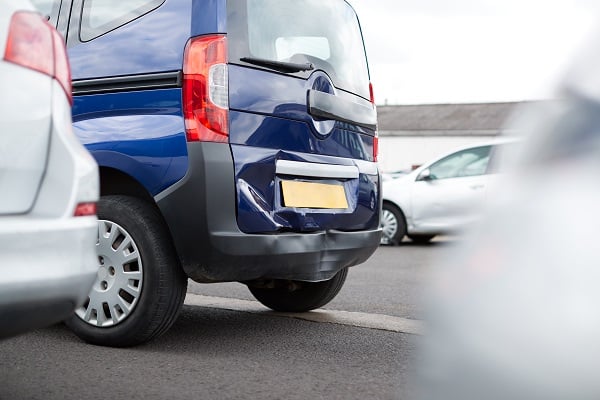Safe and responsible driving requires more than just understanding the rules of the road. It also necessitates the application of common sense, respect for other drivers, and an appreciation for the potential dangers of reckless behavior. One significant aspect of promoting safety on the roads is acknowledging common driving errors. These mistakes, often born out of negligence or disregard for traffic regulations, can lead to devastating consequences, including accidents, financial penalties, and even loss of life. Hence, an exploration of the most frequent blunders committed by drivers is of paramount importance.
Contents
Not Adhering To Speed Limits

Speed limits exist for a reason. They are carefully calculated by traffic engineers who consider various factors like road conditions, traffic density, and proximity to residential areas. However, many drivers choose to disregard these set limits, treating them more as suggestions rather than mandatory constraints. This reckless approach to speed is not only illegal but can also lead to severe accidents. Over-speeding reduces the time drivers have to react to unexpected occurrences on the road, which could be a recipe for disaster.
Understanding the consequences of over-speeding is an essential step towards ensuring safety on the road. Fines and penalties serve as deterrents, but the most significant motivation should be preserving one’s life and that of other road users. Driving within speed limits ensures control over the vehicle, increasing the likelihood of avoiding mishaps.
Distracted Driving

Among the many mistakes drivers make, distracted driving is one of the most dangerous. It involves any activity that diverts attention from driving, including talking or texting on your phone, eating and drinking, or fiddling with the entertainment or navigation system. These distractions take the driver’s attention away from the road, leading to delayed response times and, in the worst cases, disastrous accidents.
One might argue that multitasking is a skill and that they can manage these distractions while driving. However, research has shown that the human brain isn’t truly capable of multitasking – it merely switches attention from one task to another. While driving, such a division of attention can be hazardous. Therefore, it’s crucial to focus solely on the task of driving and avoid any activities that could divert attention.
Incorrect Use Of Indicators

Traffic indicators or turn signals are essential tools for communicating intentions on the road. They inform other drivers of the direction a vehicle is about to take, whether it’s changing lanes or making a turn. But misuse or negligence in using indicators is a common mistake that often leads to confusion, road rage, or even accidents.
A common error is not using indicators at all, which leaves other drivers guessing about the next move. Equally problematic is leaving turn signals on after making the move, leading others to assume a change in direction that isn’t happening. Another issue is indicating too late, giving insufficient time for other drivers to react. These mistakes are easy to avoid by being conscious about proper indicator use and considering it as a crucial part of responsible driving.
Tailgating

Tailgating, or following too closely behind another vehicle, is a dangerous and aggressive driving habit. It violates the basic rule of maintaining a safe distance, typically a two-second gap in good conditions and a four-second gap in poor ones. The practice is dangerous as it provides a minimal reaction time if the vehicle in front stops suddenly, often resulting in rear-end collisions.
While some drivers tailgate out of impatience, others might not even realize they’re doing it. However, it’s important to remember that this practice not only puts the driver at risk but also the passengers and other road users. No matter the situation, it is advised to maintain a safe following distance, taking into account the speed, road conditions, and visibility. The safety that comes from patience and maintaining a safe distance greatly outweighs the risks associated with tailgating.
Impaired Driving

Driving while impaired is one of the most fatal mistakes a driver can make. Whether it’s due to alcohol, drugs, or exhaustion, impaired driving significantly decreases a driver’s reaction time, decision-making capacity, and control over the vehicle. It’s a dangerous risk that threatens not only the driver but also passengers, pedestrians, and other road users.
The effects of alcohol and drugs on driving are well known, but the dangers of driving while tired are often overlooked. Fatigue can impair a driver just as much as alcohol or drugs. Driving demands attention, quick reflexes, and decision-making, all of which are compromised when a driver is under the influence or fatigued. Therefore, it is critical to ensure optimal physical and mental condition before hitting the road.
Neglecting Vehicle Maintenance

Maintaining a vehicle in good working condition is a responsibility that comes with owning a car. However, it is often overlooked or postponed until a problem arises. Ignoring essential maintenance aspects, such as oil changes, brake inspections, tire rotations, or checking fluid levels, can lead to a vehicle’s poor performance and, in some cases, failure on the road.
Tire pressure, for instance, is something drivers tend to neglect. Overinflated tires are prone to damage from road debris and cause the car to bounce on the road, leading to a rougher ride and decreased traction. Underinflated tires, on the other hand, can cause poor fuel economy, sluggish handling, and can even lead to a tire blowout. Regular maintenance checks, timely servicing, and immediate attention to any noticeable problems will go a long way in ensuring a safe and smooth ride.
Ignoring Weather Conditions

Road conditions can vary dramatically with weather changes. It is crucial to adapt driving habits to match these conditions, but too often, drivers ignore this need for adaptation. Wet roads require slower speeds to prevent skidding, while foggy conditions call for careful use of lights and greater following distances. Not adjusting driving behaviors for weather conditions can increase the risk of accidents significantly.
An example of such a mistake is speeding during heavy rain or snow. These conditions significantly reduce visibility and increase braking distance, requiring slower speeds and heightened caution. Yet, many drivers do not adequately adjust their driving style to these changes, leading to dangerous situations. Understanding the implications of different weather conditions on road safety and driving accordingly is key to reducing accidents and promoting safety on the roads.
Not Wearing Seat Belts

There’s no disputing the fact that seat belts save lives. They are among the most effective safety devices in vehicles today. Yet, it’s shocking how many people neglect to use this life-saving tool. Not wearing a seat belt is a mistake that can lead to severe injuries or even death in the event of a crash.
Misconceptions about seat belts abound. Some believe that airbags render seat belts unnecessary, but this is far from the truth. Airbags and seat belts are designed to work together, and one does not replace the other. In fact, the force of an airbag can seriously injure or even kill an occupant who is not restrained by a seat belt. It is crucial to make the simple act of buckling up a part of every trip, no matter how short.
Conclusion
In conclusion, the importance of acknowledging and correcting common driving errors cannot be overstated. Being aware of these errors and making a conscious effort to avoid them will help ensure safety on the roads. It is crucial to always follow speed limits, stay focused on the road, use indicators correctly, avoid tailgating, abstain from driving when impaired, perform regular vehicle maintenance, adapt driving to weather conditions, and always wear a seat belt. Promoting safe driving habits isn’t just about individual safety, it’s about making the roads safer for everyone. It’s hoped that understanding these frequent driving mistakes will help drivers make safer decisions when behind the wheel.


